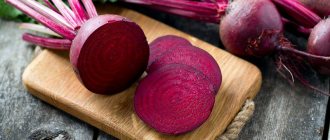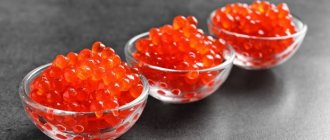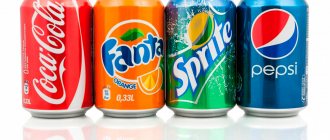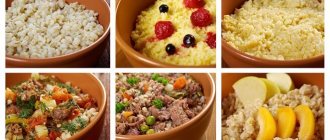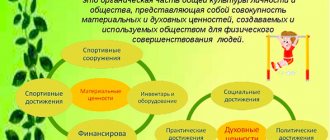What are the benefits of porridge? Which ones are considered the most useful? Let's figure it out together with a nutritionist.
In Ancient Rus', warriors were fed porridge; it was considered the second dish after cabbage soup; it was on the tables of both the rich and the poor. During the reign of Alexander Nevsky, holidays and any celebrations were called porridge. And in the army, porridge was perhaps the most popular dish. Today we’ll talk about the most popular options and analyze their beneficial properties.
Elena Doronkina
nutrition specialist, founder of the healthy nutrition delivery service GetVegetable
Porridge strengthens the cardiovascular system, helps fight stress, increases energy levels in the body, and has a positive effect on intestinal microflora.
Buckwheat
Calories in water:
160 kcal / 100 g.
Already in the 17th century, it was rightfully considered the national dish of the Russian people, and commander Suvorov called it “heroic” and fed it to his soldiers.
Elena:
This is perhaps the healthiest of all porridges, especially when cooked in clean drinking water. Thanks to its beneficial properties, buckwheat helps to get rid of excess weight and reduces hunger, which is especially important for those who are concerned about their figure. In addition, it has a low glycemic index.
Photo: unsplash.com/@pundalex
Buckwheat has a beneficial effect on the nervous system, improves mood, and increases performance, which is especially important during quarantine. It also increases the level of hemoglobin in the blood. The benefits of buckwheat are explained by its high content of zinc, phosphorus, iron, folic acid and vitamin B6.
Couscous
Couscous is also a type of wheat grain. Made from ground durum wheat. The nutritional value is similar to pasta, but this grain does not need to be cooked. It is enough to pour boiling water or steam it.
The main properties of porridge include reducing the risk of cancer, chronic heart disease, and diabetes. Couscous stabilizes hormonal levels and strengthens the immune system. It is a powerful antioxidant due to its high selenium content.
It also contains copper, which prevents early graying.
Oatmeal
Calories in water:
70 kcal / 100 g.
In London, they once opened a chain of stalls selling oatmeal instead of hamburgers, so that people would take better care of their health. This is one of the most popular breakfast cereals.
Elena:
The healthiest type of oatmeal is considered whole grain. The only negative is that it will take up to half an hour to prepare. It contains complex carbohydrates that regulate intestinal function and support microflora thanks to fiber. If you are losing weight, you should definitely choose long-cooked cereals. Because porridge, which is prepared quickly, will not provide much benefit to the body, and it is generally better to exclude oatmeal in bags from the diet, since it contains a lot of sugar.
What happens if you eat oatmeal every day for seven years?
What to add to PP porridge to avoid gaining weight?
Oatmeal also has a number of beneficial properties: it helps fight stress due to its magnesium content, strengthens the cardiovascular system, improves brain function, and speeds up metabolism.
Conclusion
All the described cereals are valuable food products. They are rich in dietary fiber, antioxidants, vitamins and minerals, which improve the health of all body systems.
Based on the information presented above, in descending order of biological potential, the following rating of cereals can be made:
- oatmeal;
- pea;
- barley;
- semolina;
- corn;
- wheat;
- millet.
However, from a practical point of view, it is difficult to compare cereals, since each of them has a unique set of properties. For example, barley helps better with constipation and gallstones, while wheat is effective in preventing malignant tumors.
Semolina
Calories:
80 kcal / 100 g.
Lately we often hear that semolina porridge does not contain any nutritional properties. Actually this is not true.
Elena:
Semolina contains a large amount of vitamin B1, which regulates brain function and has a beneficial effect on the nervous system. It improves the synthesis of nerve cells due to vitamin B2. Therefore, if you are very tired or expend a lot of energy, semolina will make up for these losses. It will also be useful for those who have stomach problems. The enveloping properties of semolina will help it recover and also reduce the risk of gastritis or ulcers.
Photo: unsplash.com/@alenaganzhela
Benefits and harms
Since childhood, our parents told us: “Eat porridge, it contains a lot of vitamins!” That's right. Cereals are indeed rich in various micro- and macroelements. These include proteins, fiber, and B vitamins. At the same time, cereals contain a minimal amount of fat. It seems that porridge really is the ideal product.
However, here you also need to remember about the amount of consumption and a couple more nuances. For example, many people know that most of the minerals are contained in the grain shell. Therefore, it is worth noting that grain is much healthier if it undergoes as little processing as possible. Ground grains are also less beneficial (they cook quickly). This should be taken into account when choosing your next product.
Thus, even such a dish has its exceptions and disadvantages. We'll talk about this a little later, but for now let's find out some general points and understand the chemical composition and nutritional value of cereals.
Millet porridge
Calories in water:
90 kcal / 100 g.
In Rus', millet porridge was eaten both on weekdays and during festive feasts.
Elena:
Millet porridge, like buckwheat, is a good dietary dish. Due to its special properties, it normalizes cholesterol metabolism, which prevents the accumulation of fat in the body. Millet also has antioxidant properties and removes harmful substances from the body. Contains magnesium, phosphorus, calcium, amino acids and vitamins B2, B5, B6. Eating millet porridge will have a beneficial effect on the quality of the skin, improve the functioning of the cardiovascular system, reduce the risk of dementia, regulate blood sugar levels and have a beneficial effect on the functioning of the liver and pancreas.
I ate little porridge: how does a diet for losing weight on cereals work?
Did you eat porridge? 5 ideas for a healthy and beautiful breakfast
What determines the nutritional value of cereals?
The nutritional properties of cereals generally depend on its technological processing. That is, on the number of processing steps to which it is subjected. The more the grain is polished, the less benefit. Nowadays, instant porridges have become especially popular. This is achieved through special technologies. The devices grind the grain shell, which becomes thinner. In this way, most of the necessary substances are unfortunately removed.
As we have already found out, cereals are a truly healthy product for the body. Their value also depends on the amount of protein, fiber, minerals and vitamins. Some cereals are richer in their content, others are poorer. Although, in any case, they all remain healthy and are suitable for a healthy diet.
Corn porridge
Calories in water:
141 kcal / 100 g.
It is believed that the Indians were the first to cook corn porridge. It nourished the body well, and its preparation did not require much effort.
Elena:
Corn porridge does not contain gluten. A natural antioxidant improves skin quality, normalizes the nervous system, removes harmful substances from the body, contains vitamins B, C, PP, amino acids and carotene. Improves the general condition of the body, strengthens the immune system, which is especially important in the cold season.
Eating corn porridge will reduce the risk of depression, reduce blood sugar levels and strengthen the heart. It will be especially useful for those diagnosed with diabetes.
Photo: unsplash.com/@alenaganzhela
Everyone's diet should include porridge. After all, they contain important vitamins and microelements that help improve the functioning of the whole body.
WHEAT GREATS: SEMONA, BULGUR, COUSCOUS
Wheat is used to make several types of cereals, none of which should be eaten if you are gluten intolerant. And in terms of nutritional value, wheat cereals are nothing special.
The most vitamin-rich of them is bulgur. This is the core of a wheat grain, which is obtained by steaming the grains and then drying them in the sun. This preserves the maximum amount of nutrients. After drying, the bran is separated from the grains, and only then the grains are slightly crushed. Contains 350 kcal per 100 grams of product. The taste of bulgur is best revealed when fried in butter, which is not very suitable for dietary dishes, because the calorie content doubles!
Processing the grain to create wheat grits involves grinding to remove the bran and germ. As a result, the most useless part of the grain remains, which is ground. The nutritional value of such porridge is average, and in case of gastrointestinal diseases, eating it is completely prohibited.
Semolina is prepared from the most refined wheat grains, also finely ground. Calorie content approximately 340 kcal. When eating semolina porridge, carbohydrates are very quickly converted into glucose, so diabetics and people prone to obesity should not eat it. Semolina contains another “pitfall” - phytin. It binds calcium and removes it from the body. Accordingly, semolina is contraindicated for children under three years of age. But the same phytin improves the condition of ligaments, which is why semolina porridge is recommended for older people.
Couscous is semolina rolled in flour. Apart from the higher gluten content, there is no significant difference from semolina.
Contraindications
Despite the fact that porridges are very useful for losing weight, diets based on them do not always end successfully. They have their own contraindications due to the fact that the diet of such hunger strikes is poor in protein. Its deficiency negatively affects the functioning of many internal organs, which can lead to undesirable consequences and complications.
Therefore, you should not use cereals for long-term and strict diets if you have the following health problems and conditions:
- pregnancy;
- thyroid diseases;
- lactation;
- renal failure;
- taking powerful medications;
- problems with the gastrointestinal tract;
- tendency to allergies;
- diabetes mellitus (exception - barley porridge);
- celiac disease.
In addition, keep in mind that if you choose exclusively low-calorie cereals for your diet, it is recommended to reduce any stress on the body (physical, intellectual, emotional) to avoid exhaustion.
How to eat properly
To successfully lose weight on cereals, it is important to follow the basic principles of nutrition. The main thing is to maintain a drinking regime: 2–2.5 liters of water or unsweetened green tea per day. The liquid should not be consumed during meals, but half an hour before or after, so as not to interfere with normal digestion.
It is recommended to alternate different types of cereals, introducing at least 3 types into the weekly diet. This way the body will receive more nutrients. You should eat grains for weight loss at least 3 times a week: for breakfast and lunch. It is not advisable to have dinner with them, since carbohydrates must have time to be digested. The ideal serving size is about 150 g or the volume of one handful.
Along with cereals, you should not eat high-carbohydrate and sugary foods: bananas, grapes, dates, persimmons, figs. It is healthier to supplement your diet menu with nuts, green vegetables, prunes, citrus fruits, apples or sour berries.
"Black list"
Some nutritionists believe that not all cereals are equally beneficial for weight loss. There is a separate “black list” of cereals that do not always have a positive effect on health. The facts are somewhat dubious, but they are still worth considering when organizing such diets.
- Semolina
These are the remains from the finest grinding of wheat. It is low in vegetable protein and vitamins. Almost 70% of its composition is starch. It also contains a complex mucopolysaccharide that is difficult to break down and digest. It inhibits the activity of the gastrointestinal tract.
- White rice
It is also called an empty source of calories. There are few vitamins and minerals. Therefore, you should opt for brown, wild and red varieties.
- Instant oatmeal
Oatmeal can be harmful if you use finely ground flakes that boil in just 5 minutes. There is no fiber or anything else valuable here.
